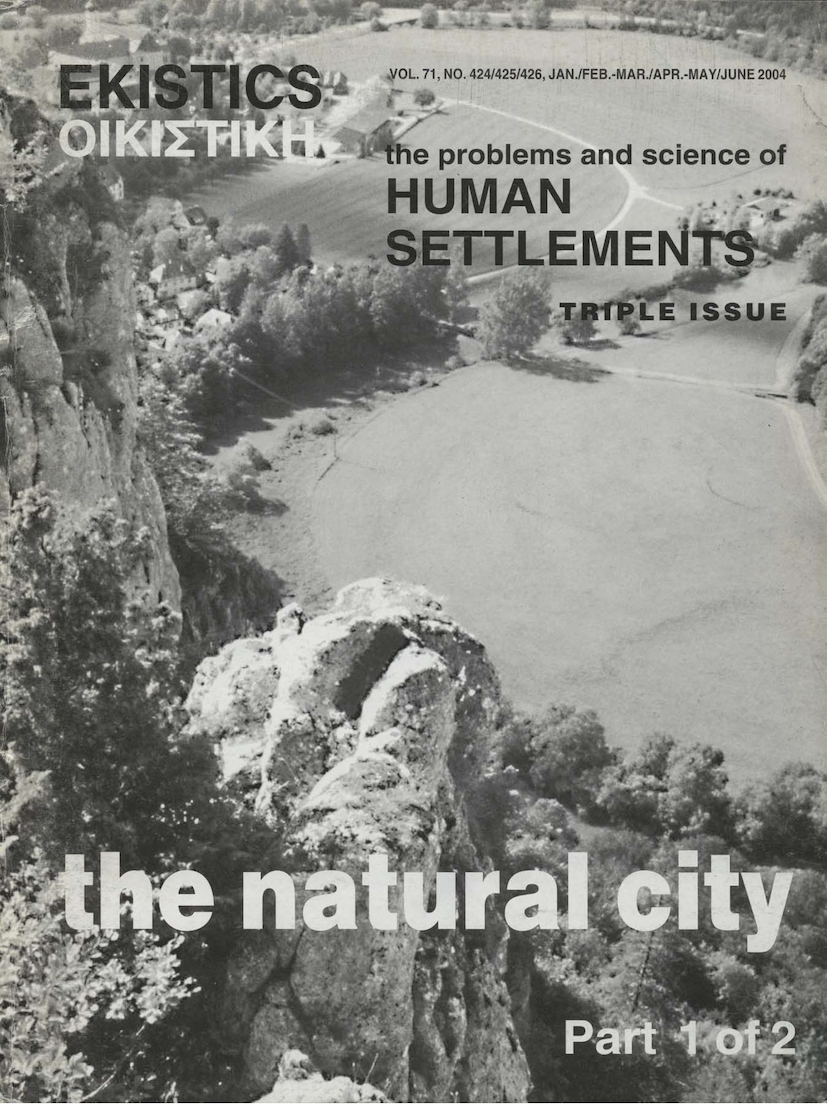The Urban Cliff Hypothesis and its relevance to ekistics
DOI:
https://doi.org/10.53910/26531313-E200471424-426228Keywords:
Urban Cliff Hypothesis, EkisticsAbstract
The Cliff Ecology Research Group (CERG), Department of Integrative Biology, University of Guelph, Guelph, Ontario, Canada, has been in existence since 1985 when its members began working on the ecology of the Niagara Escarpment (fig. 1). In 1988 they discovered a stand of ancient trees growing on the cliffs and in 1989 they discovered that in fact the escarpment cliffs support the oldest and least disturbed forest ecosystem in Canada. Individual living trees older than 1,300 years are still present and the forest appears to be in steady state. CERG's work on the ancient trees led to the idea that cliffs serve as refuges for many species including ancient humans. That observation led to the development of the Urban Cliff Hypothesis that is described in this paper and was presented at the international symposion on " The Natural City, " Toronto, 23-25 June, 2004, sponsored by the University of Toronto's Division of the Environment, Institute for Environmental Studies, and the World Society for Ekistics, and also led to the recent book entitled The Urban Cliff Revolution.
Downloads
Published
How to Cite
Issue
Section
License
Please contact the Editor-in-Chief: editor@ekisticsjournal.org, should you have any questions on copyright for your submission.
This research journal is for Educational and Knowledge development purposes.
All material published on this site complies with our copyright and terms as described by the Attribution-NonCommercial-NoDerivaties 4.0 International (CC BY-NC-ND 4.0)






